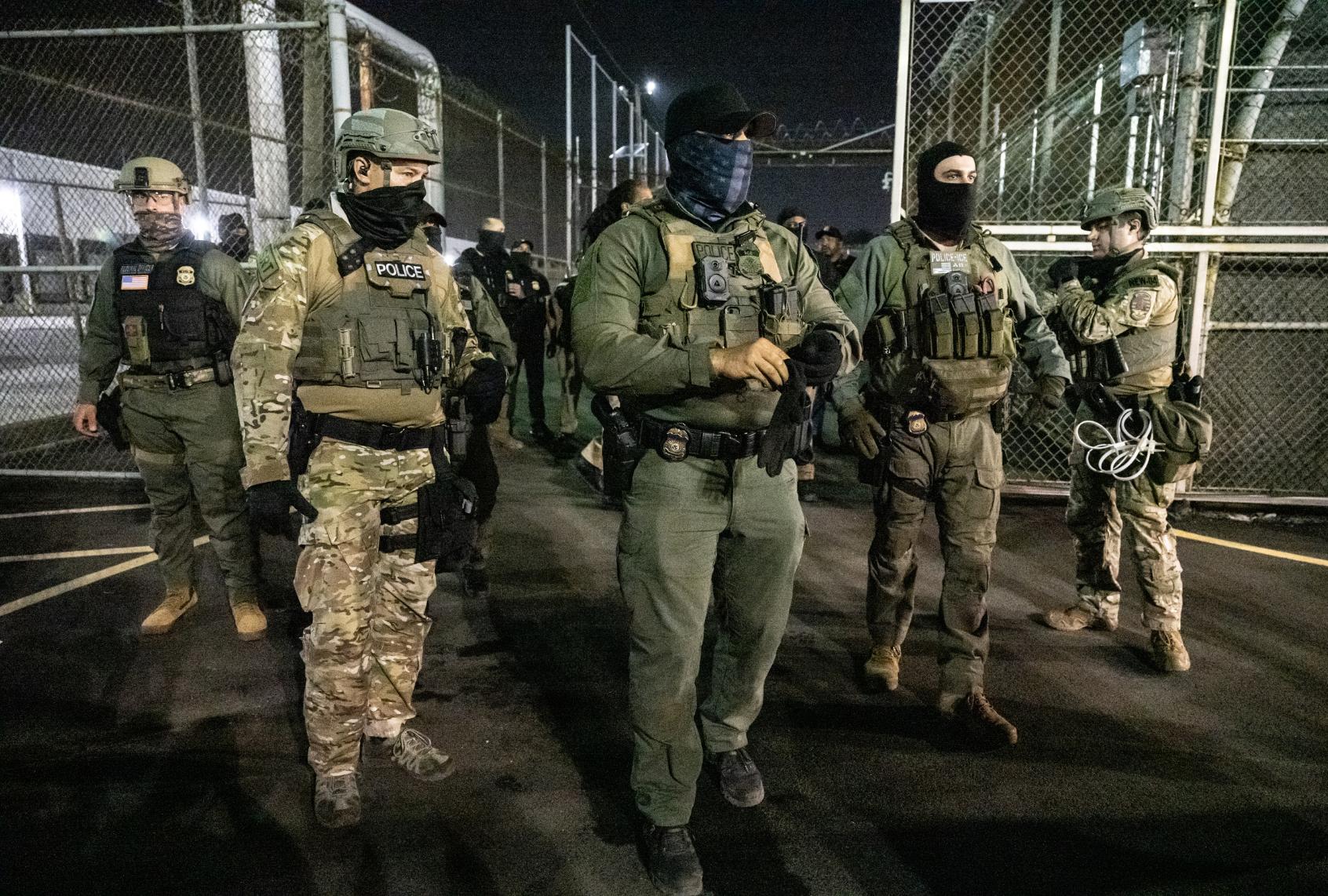President Donald Trump’s budget, which passed the Senate Tuesday, allocated some $175 billion towards his mass deportation campaign, more money than almost any country spends on its military, and many times the estimated yearly cost it would take to end world hunger.
On Wednesday, Senate Republicans green lit a budget that would cut taxes for the wealthiest Americans while slashing services like Medicaid and SNAP for everyone else. For the White House, however, the most important part of the bill seems to be the funding for Trump’s campaign to purge immigrants and, potentially, American citizens from the country.
Vice President JD Vance spoke to this in a post on X, writing: “Everything else—the CBO score, the proper baseline, the minutiae of the Medicaid policy—is immaterial compared to the ICE money and immigration enforcement provisions.”
When put in context, it’s easy to see why this is Vance’s position. The $175 billion deportation budget is larger than the military budget for any country other than the United States and China, surpassing the Russian military budget by nearly $30 billion.
Sily Shah, executive director of the human rights organization Detention Watch Network, told Salon that the budget would pave the way for an unprecedented increase in detention and deportation capacity.
“45 years ago, we just didn’t detain people in this way. For the most part, people were released from detention after a day or two, and they got to go through proceedings on their own while they were home with their families or working,” Shah said. “Since then, the scale has gone up. But this is, this is the highest it’s ever been. And they don’t even have this money.”
According to estimates from the World Food Programme, the funds going towards deportation would also be enough to fully fund the program to end world hunger for four years.
Broken down, the $175 billion topline number includes nearly $30 billion ICE’s enforcement budget; $45 billion for building new immigration detention centers; $47 billion for the construction of a border wall; $12 billion for state-level immigration measures; and roughly $10 billion to reimburse the Department of Homeland Security for “safeguard[ing] the borders of the United States,” among other provisions.
We need your help to stay independent
Americans have already had a preview of some of what’s to come with the increased deportation budget, like on Wednesday, when Trump traveled to Florida to tour a new camp being built there to house immigrants.
The facility, dubbed “Alligator Auschwitz” by critics, is a 3,000-bed tent city and prison in the Everglades. The facility is expected to cost around $450 million a year, just a fraction of the $45 billion that Republicans have allocated towards building new detention facilities. This particular facility, however, is funded by FEMA funds, reminiscent of the “FEMA concentration camp” conspiracy theory popular among Republicans, only this time it’s real. And the Florida GOP is already selling “Alligator Alcatraz” trucker hats, among other merch.
Trump also suggested that the new camp could be the first of many, foreshadowing a new incarceration system in the United States.
“Well, I think would like to see them in many states. Really, many states,” Trump said. “And, you know, at some point, they might morph into a system.”
In terms of total capacity, the American Immigration Council estimates that the new funding will be enough to balloon ICE’s detention capacity to at least 116,000 beds, which is comparable to the total number of Japanese Americans interned during the whole of WWII.
Currently, ICE has around 56,000 people in detention facilities around the country, with many of the largest facilities located in southern states like Louisiana and Texas. The current population in detention facilities also represents the highest number of detainees since August of 2019.
In practical terms, Shah said that she expects this to mean more camps like the one in Florida. Detention capacity, Shah explained, is a bottleneck in the deportation process, with more beds meaning that the Trump administration will be able to scale up their deportation campaign dramatically.
Start your day with essential news from Salon.
Sign up for our free morning newsletter, Crash Course.
“I think the work we need [is] to … make sure that doesn’t get normalized,” Shah said. “The conditions are terrible, and it makes it so much harder for people to fight their cases.”
The budget for ICE’s enforcement will likely be allocated in large part to hiring new ICE agents, the often-masked agents who abduct people from American streets and courthouses. The new $30 billion ICE budget, more than three times the previous budget, would provide for the hiring of some 10,000 ICE agents, who would receive a $10,000 bonus, per the White House. For comparison, the FBI’s budget in fiscal year 2025 was just $11 billion.
Shah underscored, however, that the ICE agents themselves likely won’t be the primary drivers when it comes to detaining people. Rather, it will be local police departments and their coordination with ICE that will serve as a funnel to push more people into detention and ultimately into deportation.
As for those who may be hoping to avoid ending up at one of Trump’s new camps through resources like the popular ICEBlock app, Tom Homan, Trump’s border czar, said he’s planning a crackdown.
Homan told far-right podcaster Charlie Kirk that the administration will be investigating the app, claiming it puts the ICE agents at risk.
“It puts ICE officers at a great risk,” Homan said. “They’re not Nazis! They’re not racists! They’re mothers and fathers, too. They’re enforcing the laws enacted by Congress.”
Read more
about immigration policy


